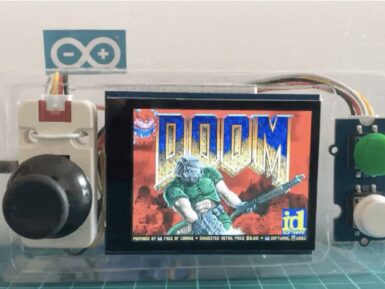
Overview
Even though Arduino Education kits are jam-packed with everything you need, we know that mislaying parts in the excitement of getting hands-on in a classroom can sometimes happen.
In the Arduino Replacements Pack, you’ll find all the common electronics parts two students may need to complete their projects.
This pack has replacement parts for the Arduino Starter Kit Classroom Pack, Arduino Student Kit, Arduino Education Starter Kit, Arduino CTC 101 and ARDUINO CTC GO! - CORE MODULE.
The pack contains a total of 183 replacement parts, including a breadboard, jump wires, LEDs, resistors, transistors, sensors, and more. (It doesn’t include motors, as you’ll find they’re not lost as often! But if you do need a new motor, board, or USB cable, you can find them all in our online store.)
Note that for larger products such as CTC GO!, you may need more than one pack of replacement parts.
Tech specs
The Arduino Replacement Pack includes:
- 1 Breadboard Assembly
- 10 Jumper Wires
- 5 Red LEDs
- 5 Green LEDs
- 5 Yellow LEDs
- 10 220Ω Resistors
- 5 680Ω Resistors
- 5 560Ω Resistors
- 5 470Ω Resistors
- 5 1.2 KΩ Resistors
- 5 10 KΩ Resistors
- 5 1 KΩ Resistors
- 5 4.7 KΩ Resistors
- 5 10 MΩ Resistors
- 5 1 MΩ Resistors
- 2 100 uF capacitor
- 2 Phototransistors
- 2 Piezos
- 5 Push Buttons
- 5 Potentiometers
- 5 Knobs for potentiometer
- 1 Battery Wire 9V - open lead
- 1 Zener diode
- 1 Temperature sensor
- 1 Optocoupler
- 1 Mosfet transistors
- 1 Tilt sensor
- 1 Steel ball 12 mm diameter
Resources for Safety and Products
Manufacturer Information
The production information includes the address and related details of the product manufacturer.
Arduino S.r.l.
Via Andrea Appiani, 25
Monza, MB, IT, 20900
https://www.arduino.cc/
Responsible Person in the EU
An EU-based economic operator who ensures the product's compliance with the required regulations.
Arduino S.r.l.
Via Andrea Appiani, 25
Monza, MB, IT, 20900
Phone: +39 0113157477
Email: support@arduino.cc
Get Inspired
Print a claw on your 3D printer and use a myoelectric sensor to control it.

"But can it run Doom?" is more than just a joke in the tech world. It is also a decent litmus test for the computing power of hardware. That test isn't very relevant for modern computers, but it is still worth asking when discussing microcontrollers. Microcontrollers vary in dramatically in processing power and memory, with models to suit every application. But if you have an Arduino Nano ESP32 board, you can run Doom as Naveen Kumar has proven. The Nano ESP32 is a small IoT development board for the ESP32-S3 microcontroller, featuring Wi-Fi® and Bluetooth® connectivity. It also has a relatively high clock speed and quite a lot of memory: 240MHz and 512kB SRAM, respectively. That still isn't enough to meet the requirements of the original Doom release, which needed a lot more RAM. But Kumar demonstrates the use of an MCU-friendly port that runs well on this more limited hardware. Want to give it a try yourself? You'll need the Nano ESP32, an Adafruit 2.8" TFT LCD shield, an M5Stack joystick, a Seeed Studio Grove dual button module, a breadboard, and some jumper wires to create a simple handheld console. You'll have to compile and flash the Retro-Go firmware, which was designed specifically for running games like Doom on ESP32-based devices. You can then load the specialized WAD (Where's All the Data) files. Kumar reports an average frame rate at a 320×240 resolution, which is very playable.








